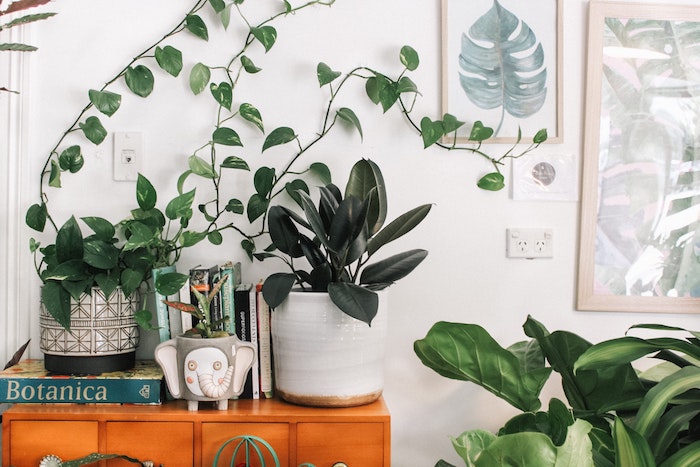
Ah, plants. Brighteners of homes, absorbers of carbon dioxide, and scientifically proven to make you happy. Not only do they add beauty and health to our spaces, but they also give us something to care for (and provide a small sense of purpose and belonging), which, in and of itself, is hugely important for our mental health.
You might be thinking, “But I don’t have a green thumb.” Nonsense. Whether you’re a budding plant-parent (see what we did there?) or haven’t had great luck starting floral families in the past, you can do this.
Caring for plants is a bit like starting a new relationship: exciting, but just a little tricky. You need to discover your compatibility, establish routines, learn about each other, and nourish accordingly if you want it to work.
Ahead, here are three tips to get you on the road to sprouting success.
1. Figure out your plant parenting style
It’s tempting to just start scouring the internet or local greenhouse for the prettiest plant you can find, but successful plant caregivers know you need to be realistic about your selection.
Do you obsess over how the babies are doing when you’re out of the house, and can’t wait to dust them (yes, that’s important), and spritz them? Or are you more of a let-them-figure-it-out-on-their-own type? Neither is better than the other, but you need to be honest with yourself about how much labor you want to pour into your floral friends.
If you’re low maintenance and want your plants to be the same — or if you live an on-the-go lifestyle — consider a cactus varietal or the notoriously unkillable ZZ Plant.
If you’re a compulsive nurturer (or just want a bit of a challenge), try your hand at maintaining a gaggle of carnivorous plants or orchids.
Other factors you should consider are if you have pets or kids. If you have either, make sure you pick a plant that isn’t toxic to them.
Lastly, does your home get lots of natural light? Light is plant food, and some plants have big, big appetites. Make sure to check the light requirements of your new plant-child before adopting it.
2. Watering schedule matters
Many inexperienced plant owners struggle with their watering schedule, and, unfortunately, there are no hard and fast rules when it comes to watering plants. It’s all about patience, practice, and observation.
A rule of (green) thumb: If you’re unsure whether or not your plant needs water, simply slide a finger into the soil — half an inch or so. If there’s moisture, leave it be and watch for signs of thirst (brownness, curling leaves). If it’s bone dry, give it a drink! Remember: under-watering beats over-watering, every time.
3. Learn how to repot plants
Repotting is like moving for plants. Even if you’re just refreshing the soil and not replacing the pot, the jostling that occurs is stressful to our leafy companions. There is a method that’ll keep the anxiety to a minimum, though.
A few rules:
Don’t grab the stems and pull straight up. Turn your plant on its side and gently tap the bottom of the pot until it slides out. This keeps the stems, leaves, and blossoms in good shape and also protects the roots from breakage.
Don’t re-pot too often. No matter how careful you are, frequent moves may result in permanently nervous, wilted plants.
Do loosen the roots after you remove the plant from its pot.
Do remove some (although not all) of the old soil before putting in new stuff. Your plant has likely already gobbled up a lot of the nutrients and it needs fresh potting mix for its next growth spurt.
Do keep in mind that the potting mix is not necessarily one-size-fits-all. Make sure you pick the right one for your plant.
What other plant care tips do you have? Let us know in the comments below!
xx, The FabFitFun Team





